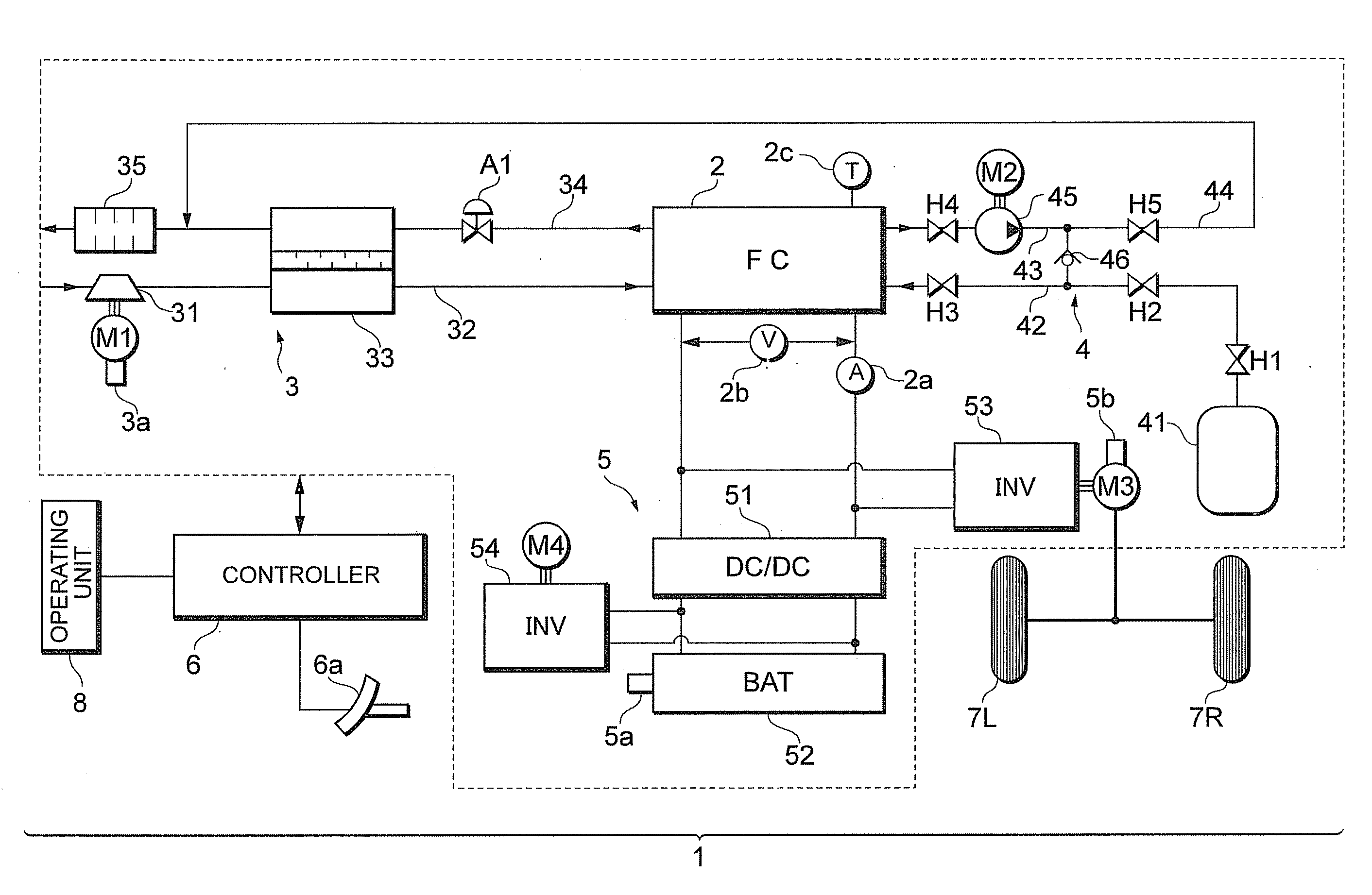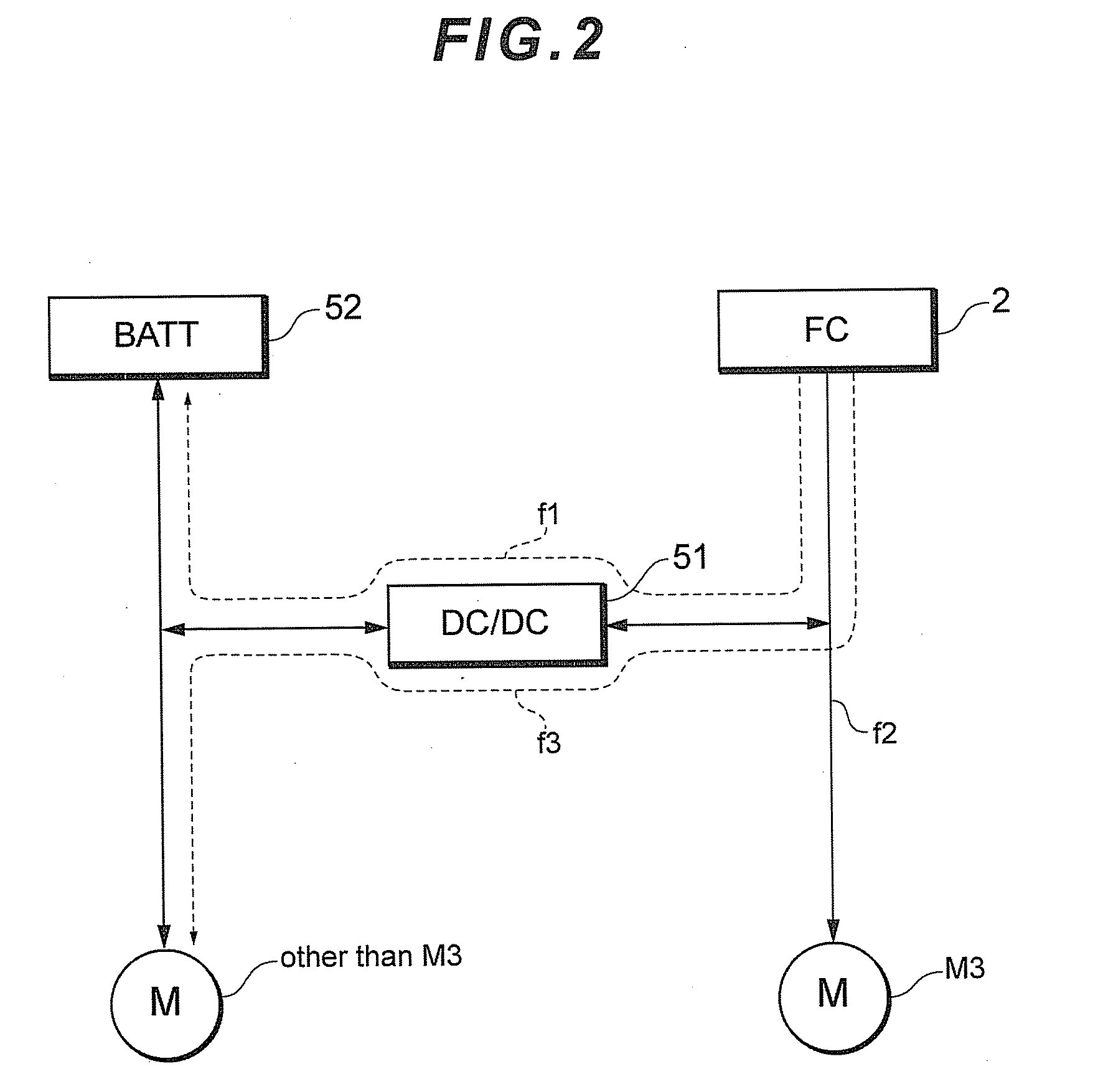Fuel cell system, electrode catalyst degradation judgment method, and moving body
- Summary
- Abstract
- Description
- Claims
- Application Information
AI Technical Summary
Benefits of technology
Problems solved by technology
Method used
Image
Examples
Embodiment Construction
[0027]The following will describe a fuel cell system in accordance with an embodiment of the present invention with reference to the accompanying drawings. In the present embodiment, the description will be given to an example wherein the present invention has been applied to a vehicle-mounted power generation system of a fuel cell vehicle.
(Explanation of Configuration)
[0028]First, by referring to FIG. 1, the configuration of a fuel cell system 1 in accordance with the embodiment of the present invention will be described.
[0029]As illustrated in FIG. 1, the fuel cell system 1 according to the present embodiment is equipped primarily with a fuel cell 2 which carries out power generation by receiving supplied reactant gases (an oxidizing gas and a fuel gas) and generates power by the power generation, an oxidizing gas piping system 3 which supplies air as the oxidizing gas to the fuel cell 2, a fuel gas piping system 4 which supplies a hydrogen gas as the fuel gas to the fuel cell 2, ...
PUM
 Login to View More
Login to View More Abstract
Description
Claims
Application Information
 Login to View More
Login to View More - R&D
- Intellectual Property
- Life Sciences
- Materials
- Tech Scout
- Unparalleled Data Quality
- Higher Quality Content
- 60% Fewer Hallucinations
Browse by: Latest US Patents, China's latest patents, Technical Efficacy Thesaurus, Application Domain, Technology Topic, Popular Technical Reports.
© 2025 PatSnap. All rights reserved.Legal|Privacy policy|Modern Slavery Act Transparency Statement|Sitemap|About US| Contact US: help@patsnap.com



